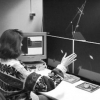179 search results - page 26 / 36 » Structure recognition on sequences with a neuro-fuzzy-system |
CVPR
1998
IEEE
14 years 10 months ago
1998
IEEE
A new approach to the recognition of temporal behaviors and activities is presented. The fundamental idea, inspired by work in speech recognition, is to divide the inference probl...
AUSAI
2008
Springer
13 years 10 months ago
2008
Springer
In recent years, there has been a cross-fertilization of ideas between computational neuroscience models of the operation of the neocortex and artificial intelligence models of mac...
ACL
2006
13 years 10 months ago
2006
This paper shows that a simple two-stage approach to handle non-local dependencies in Named Entity Recognition (NER) can outperform existing approaches that handle non-local depen...
BMCBI
2007
2007
Application of amino acid occurrence for discriminating different folding types of globular proteins
13 years 8 months ago
Background: Predicting the three-dimensional structure of a protein from its amino acid sequence is a long-standing goal in computational/molecular biology. The discrimination of ...
EMNLP
2010
13 years 6 months ago
2010
Many sequence labeling tasks in NLP require solving a cascade of segmentation and tagging subtasks, such as Chinese POS tagging, named entity recognition, and so on. Traditional p...

